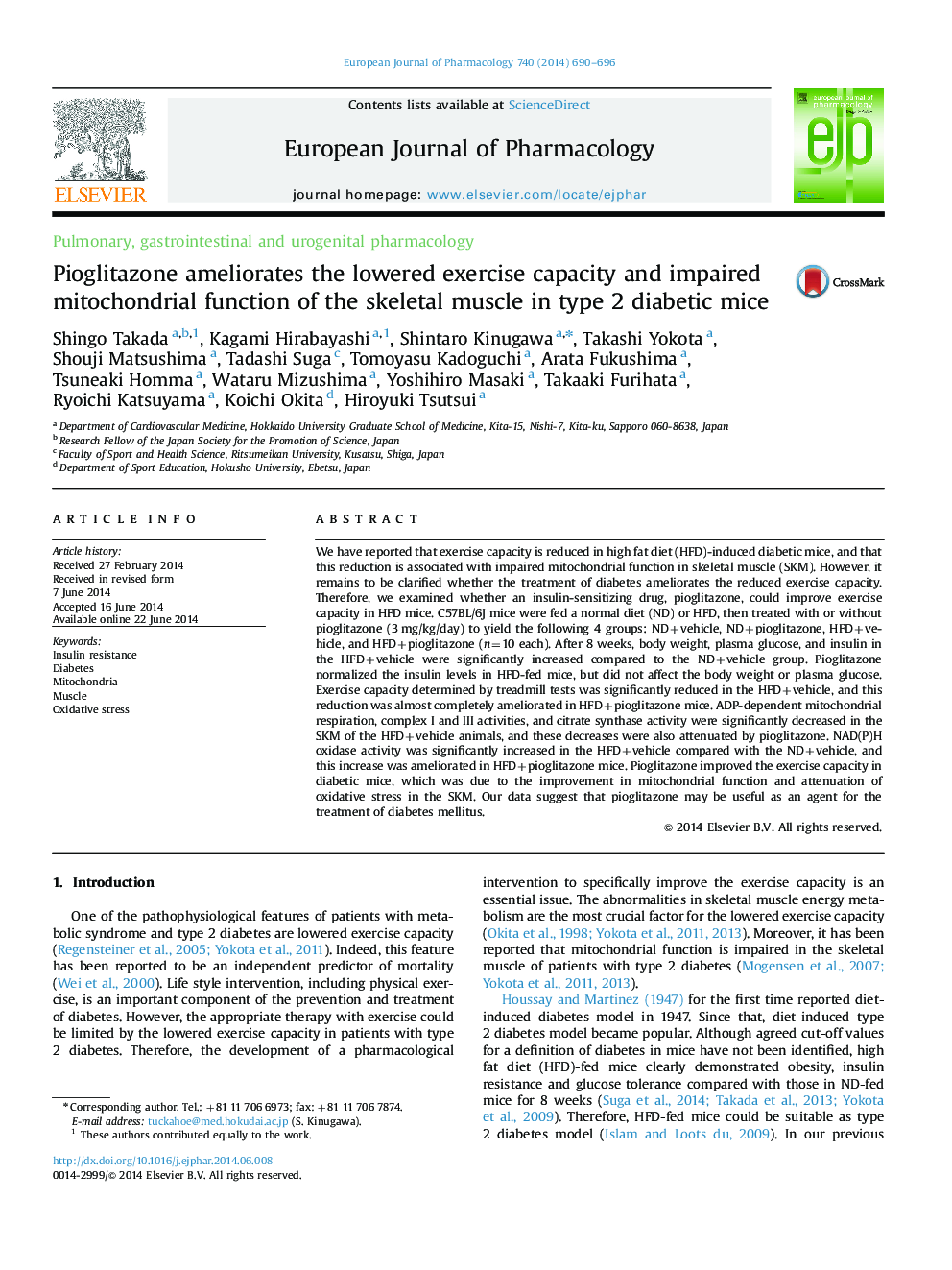| Article ID | Journal | Published Year | Pages | File Type |
|---|---|---|---|---|
| 2531669 | European Journal of Pharmacology | 2014 | 7 Pages |
We have reported that exercise capacity is reduced in high fat diet (HFD)-induced diabetic mice, and that this reduction is associated with impaired mitochondrial function in skeletal muscle (SKM). However, it remains to be clarified whether the treatment of diabetes ameliorates the reduced exercise capacity. Therefore, we examined whether an insulin-sensitizing drug, pioglitazone, could improve exercise capacity in HFD mice. C57BL/6J mice were fed a normal diet (ND) or HFD, then treated with or without pioglitazone (3 mg/kg/day) to yield the following 4 groups: ND+vehicle, ND+pioglitazone, HFD+vehicle, and HFD+pioglitazone (n=10 each). After 8 weeks, body weight, plasma glucose, and insulin in the HFD+vehicle were significantly increased compared to the ND+vehicle group. Pioglitazone normalized the insulin levels in HFD-fed mice, but did not affect the body weight or plasma glucose. Exercise capacity determined by treadmill tests was significantly reduced in the HFD+vehicle, and this reduction was almost completely ameliorated in HFD+pioglitazone mice. ADP-dependent mitochondrial respiration, complex I and III activities, and citrate synthase activity were significantly decreased in the SKM of the HFD+vehicle animals, and these decreases were also attenuated by pioglitazone. NAD(P)H oxidase activity was significantly increased in the HFD+vehicle compared with the ND+vehicle, and this increase was ameliorated in HFD+pioglitazone mice. Pioglitazone improved the exercise capacity in diabetic mice, which was due to the improvement in mitochondrial function and attenuation of oxidative stress in the SKM. Our data suggest that pioglitazone may be useful as an agent for the treatment of diabetes mellitus.
